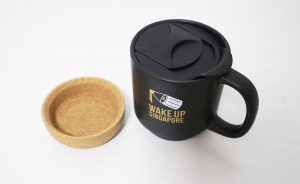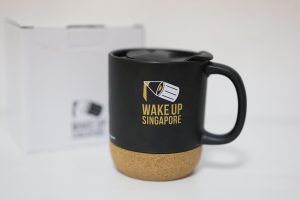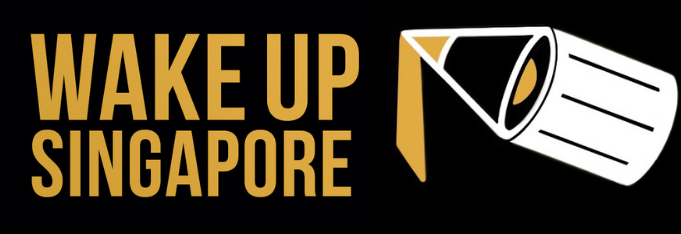The Peranakan Museum‘s curatorial decisions have come under scrutiny after museum-goers found that the write-up for the “Her Kebaya” exhibition was amended.
Amongst other things, the fact that the Kebaya “was rooted in the traditional fashion of the Malay-Indonesian world” was deleted from the original text.
The Her Kebaya exhibition runs from 23 June 2023 to 15 October 2023. It was visited by President Halimah Yaacob on 25 July 2023.

A kebaya belonging to the former President is also on display at the Peranakan Museum.
Visited the Peranakan Museum’s “Her Kebaya” exhibition, which showcases the variations of the garment worn by different communities across Southeast Asia. The exhibition coincides with a multinational application by Singapore, Indonesia, Malaysia, Brunei, and Thailand to nominate the kebaya for UNESCO intangible cultural heritage status.
In support of this, I had loaned one of my kebayas for the exhibition. The exhibition runs until 15 October 2023.
Re-writing Descriptions?
In the original write-up, which is appended below for easy reference, there were references to the kebaya’s roots in the “Malay-Indonesian” world, and the kebaya being an “integral part of Singapore’s Malay and port city heritage“.
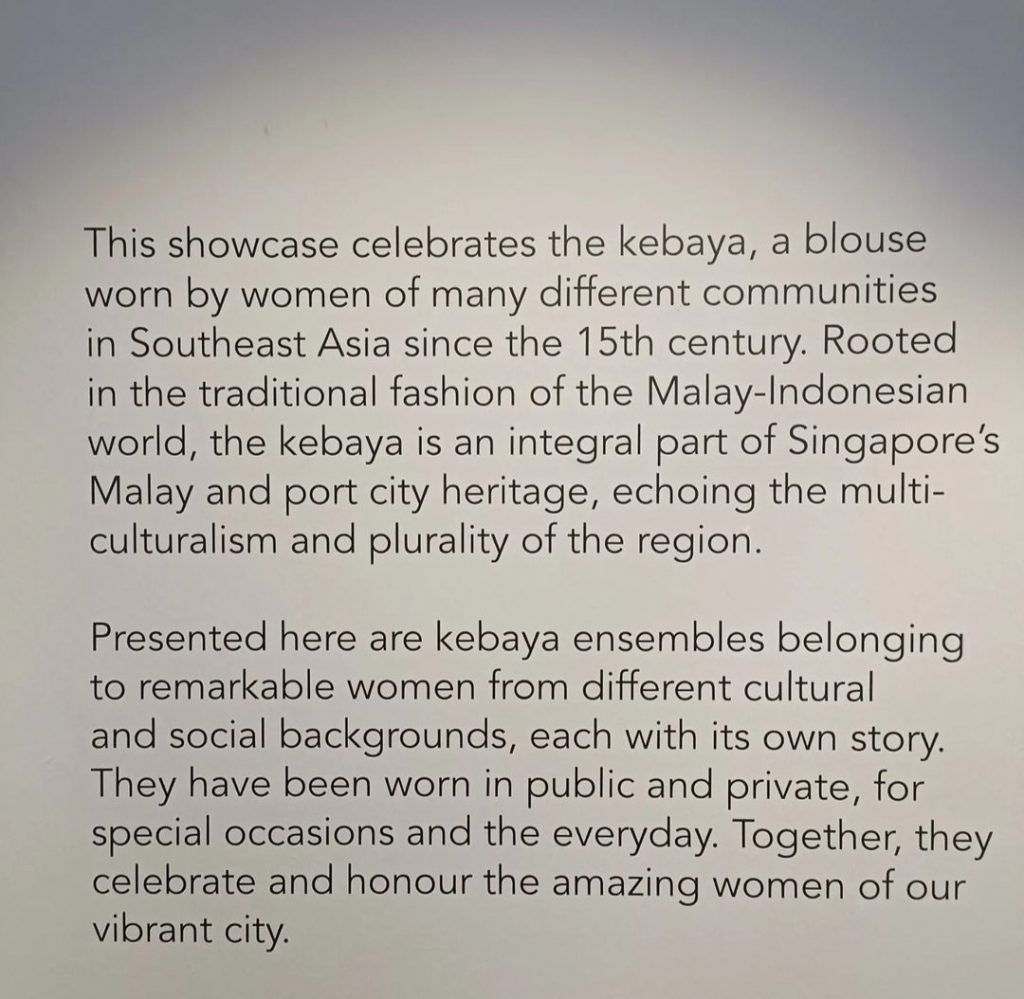
In the revised write-up, which Haider Surya Sahle noticed on 15 September 2023, the two above-mentioned references were deleted from the first paragraph. His first visit, where he took the picture above, was on 1 July 2023.
In the second paragraph, a reference to the how the 12 (or 11? – more on this below) kebaya ensembles on display were from the “Malay world” was added.
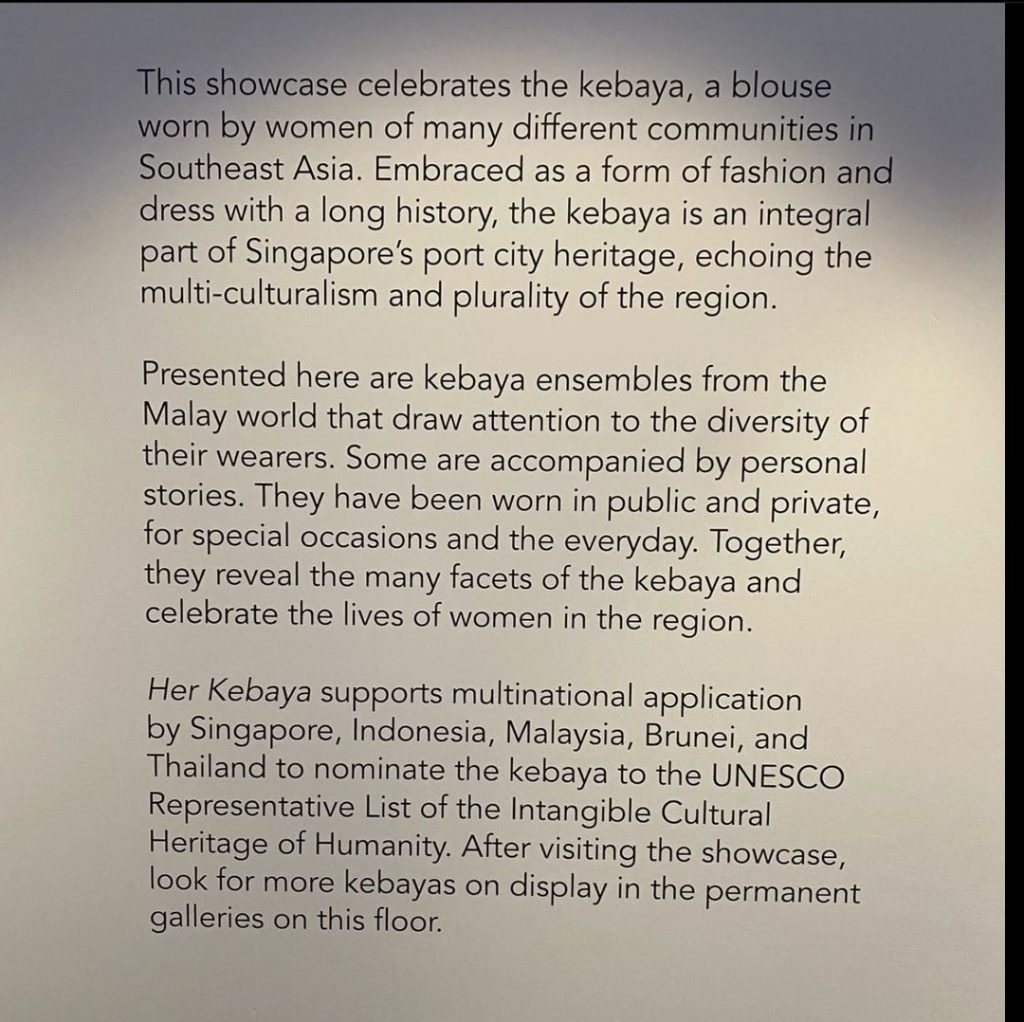
In his Instagram post, Haider, sought an explanation from the Peranakan Museum and the National Heritage Board about the reasons why the write-up for the Her Kebaya exhibition was amended a month before the exhibition ends.
His post garnered almost 300 likes and attracted 17 comments, most of which echoed Haider’s puzzlement, in 3 days.
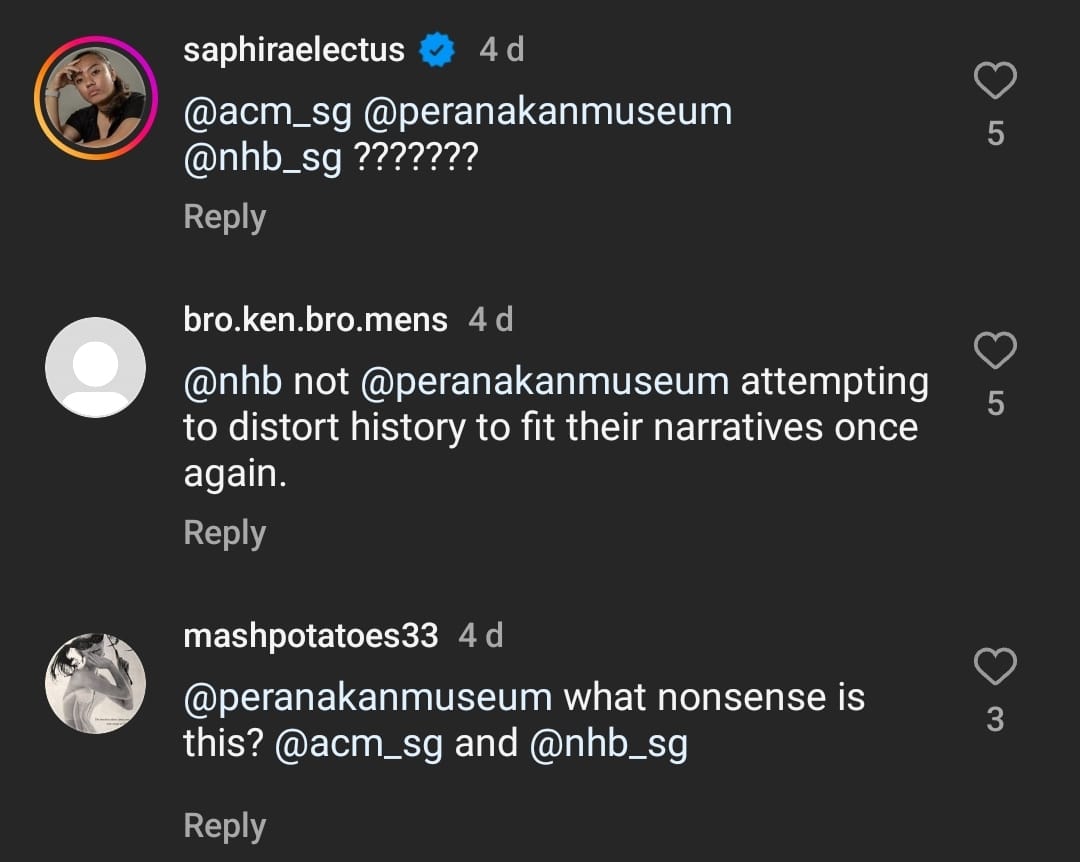
Many Instagram users sought accountability from the Peranakan Museum over the belated, and seemingly inexplicable, amendments.
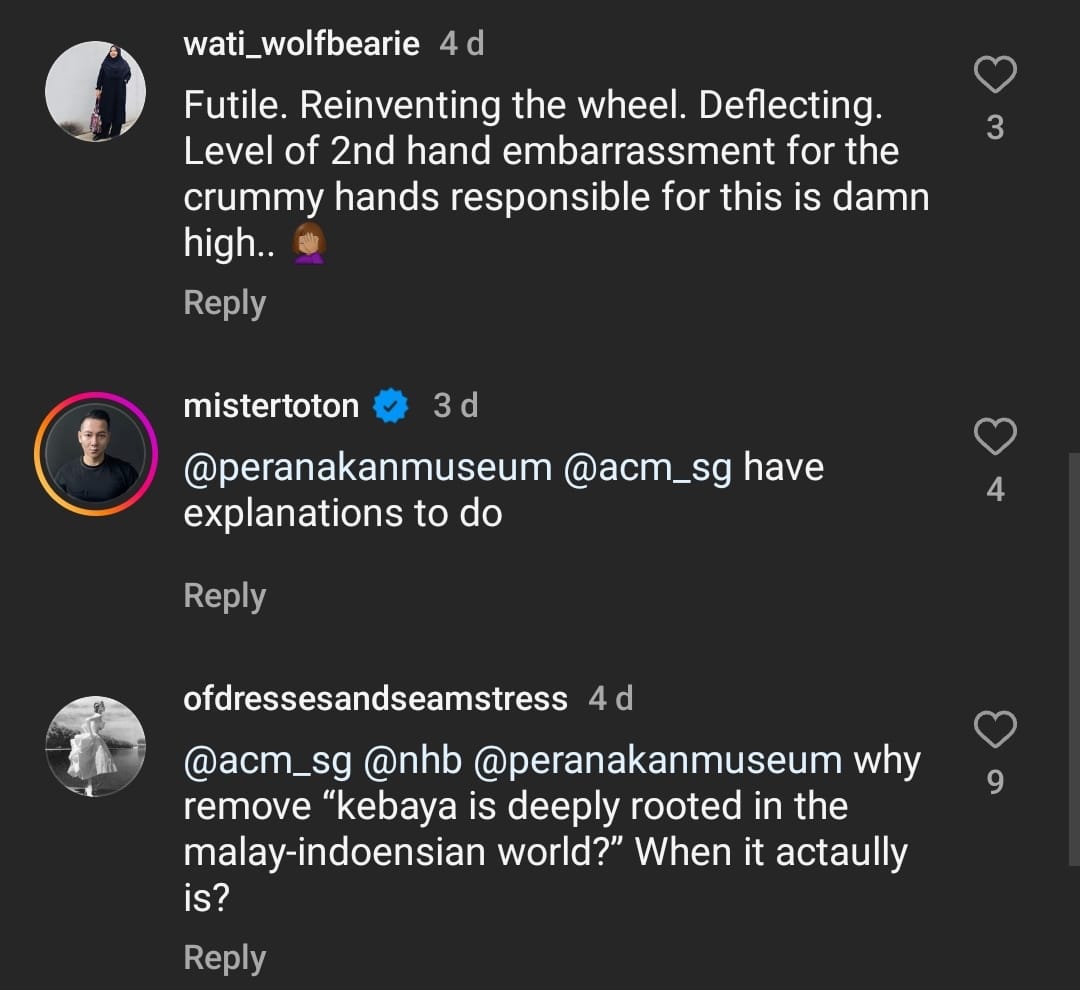
Peranakan Museum’s own Instagram caption
The caption on The Peranakan Museum’s own Instagram post dated 23 June 2023 on the Her Kebaya exhibit appeared to mirror the original write-up prior to the amendment.
Rooted in the traditional fashion of the Malay and Indonesian world, the kebaya is an integral part of Singapore’s Malay and port city heritage, echoing the multiculturalism and plurality of the region.
The two main forms are the kebaya labuh (a long kebaya) and the kebaya pendek (a short kebaya). Many names exist to refer to the various forms of kebaya, which carry different meanings for the people who use them.
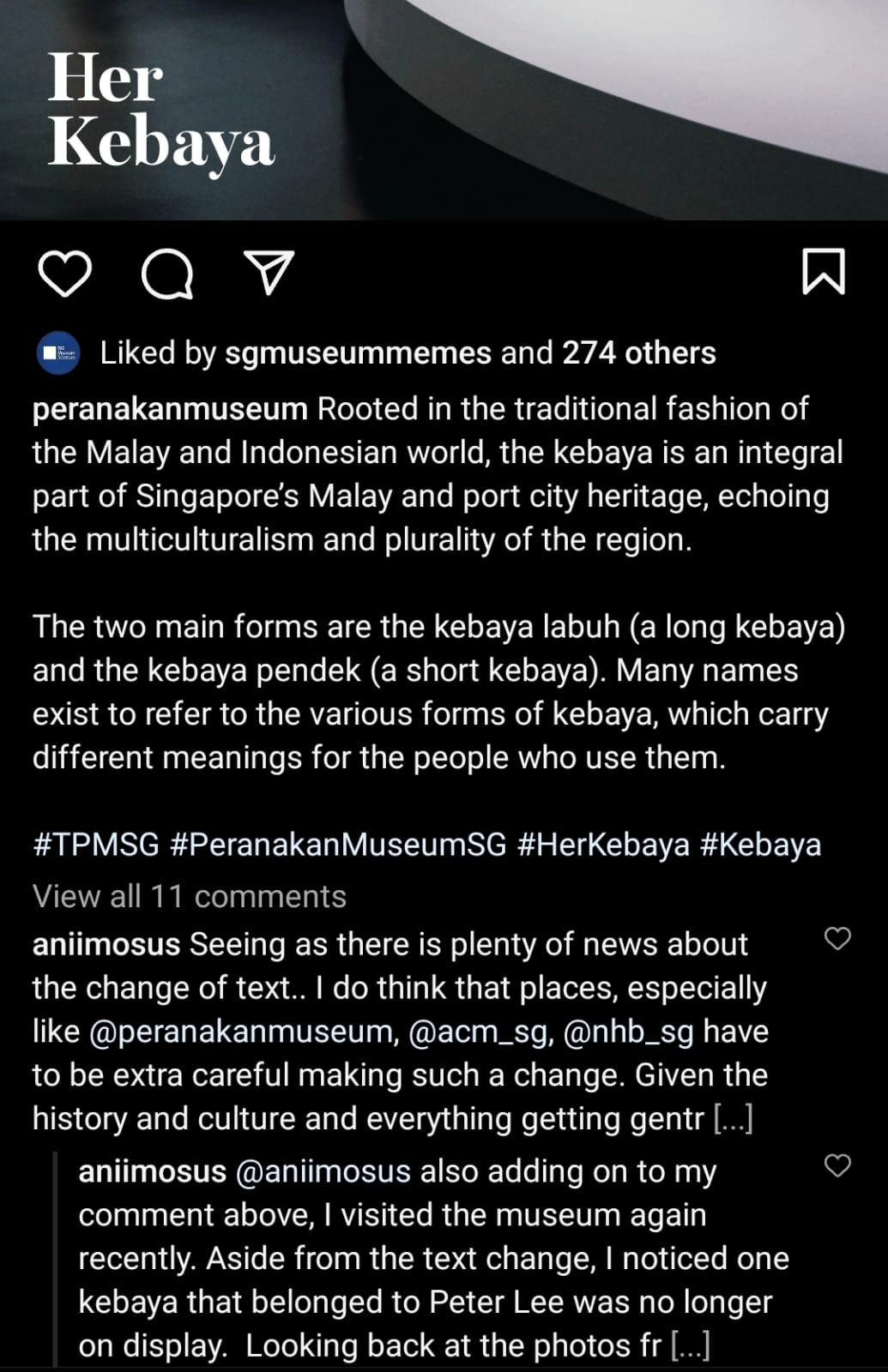
A number of comments in the comments section of the Peranakan Museum’s Instagram page continued to press them for answers on the amendments.
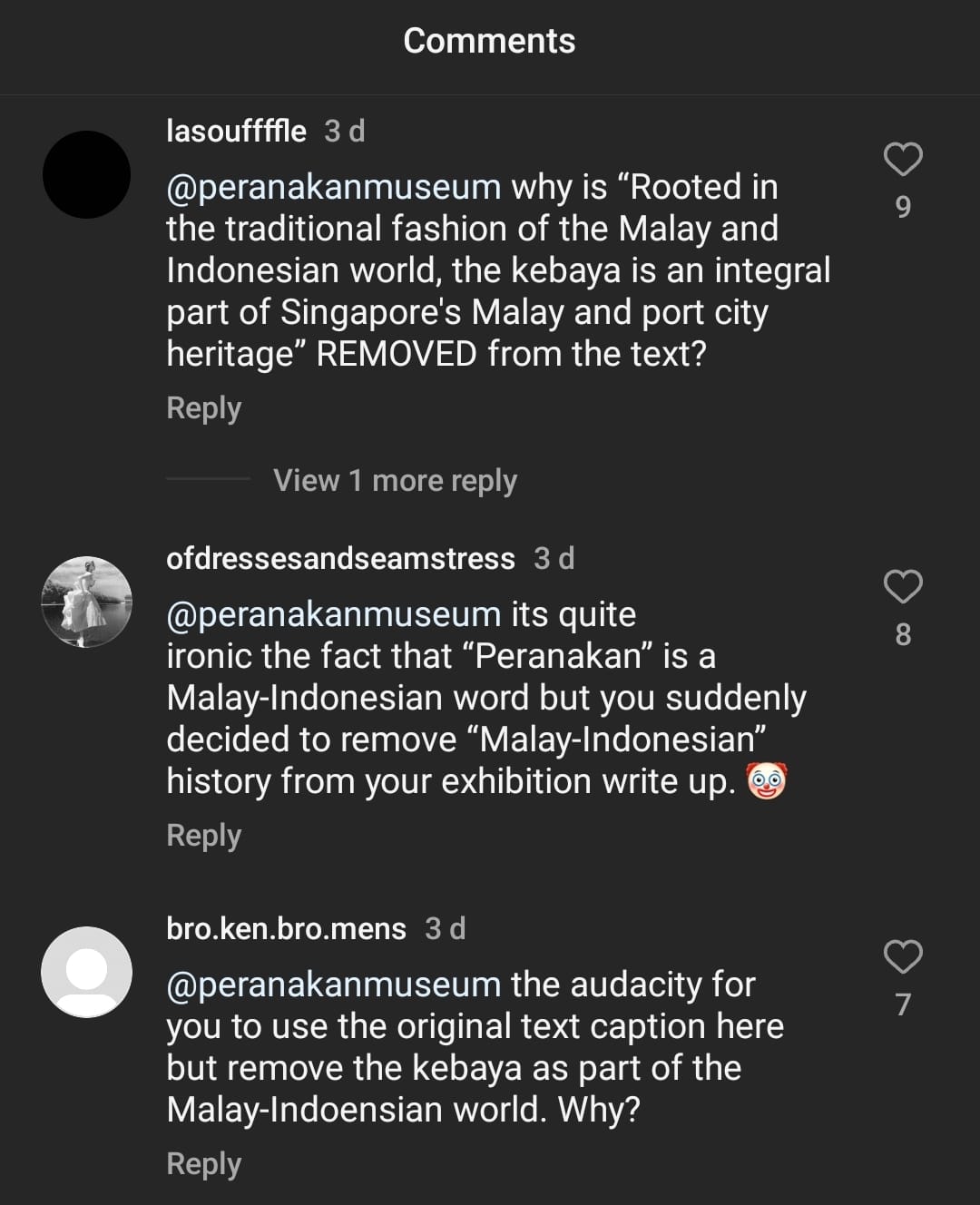
Faris Joraimi weighs in
Faris Joraimi, a history editor at Jom who is currently pursuing his PhD in History at New York University, specialises in the history of the Malay world.
Speaking to Wake Up Singapore, he opined that the amended write-up “shifts the exhibition’s argument and narrative entirely“.
This paraphrase shifts the exhibition’s argument and narrative entirely, writing out notions that the kebaya is of “Malay-Indonesian” origins and instead tying it to a “Southeast Asian” port-city context.
At stake here is what both terms mean, where “Southeast Asia” is presumed to be a more inclusive historical site for multicultural exchanges and influences. But respected historians (Sumit Mandal, Engseng Ho, Iza Hussin, Joel Khan and Ronit Ricci among others) have in the last decade advocated for the “Malay world” as a framework to understand those same processes, while highlighting some unifying cultural affinities.
If we take “Malay world” not as an ethno-racial geography, but as a fluid space that embeds diversity in a shared language (Malay), arts and pastimes, surely an object like the kebaya is a Malay-world invention par excellence!
Was Peter Lee’s family’s Kebaya removed from #HerKebaya?
Instagram user @aniimosus observed that a Kebaya donated from a “Peter Lee” appeared to have been removed from the exhibition.
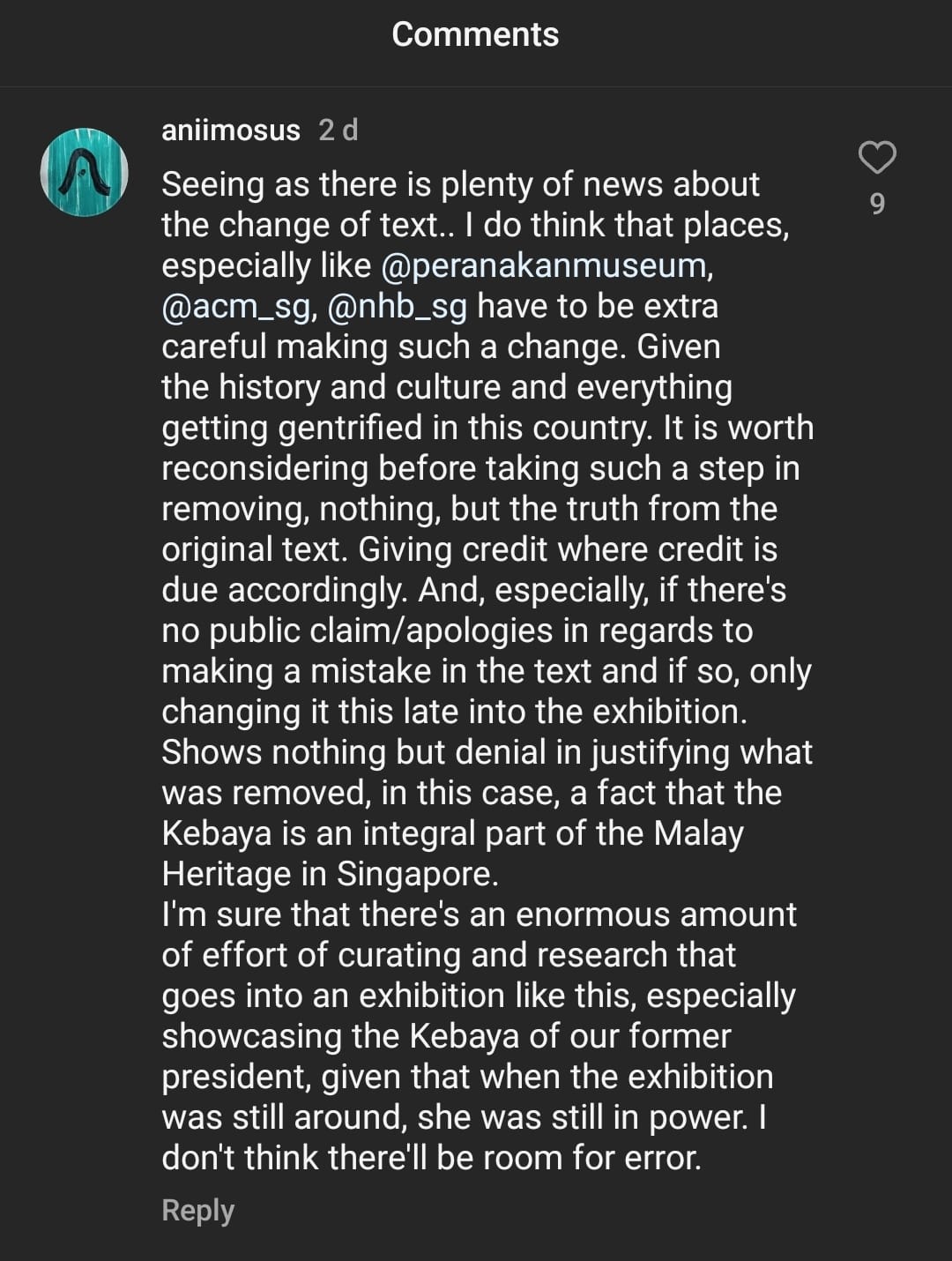
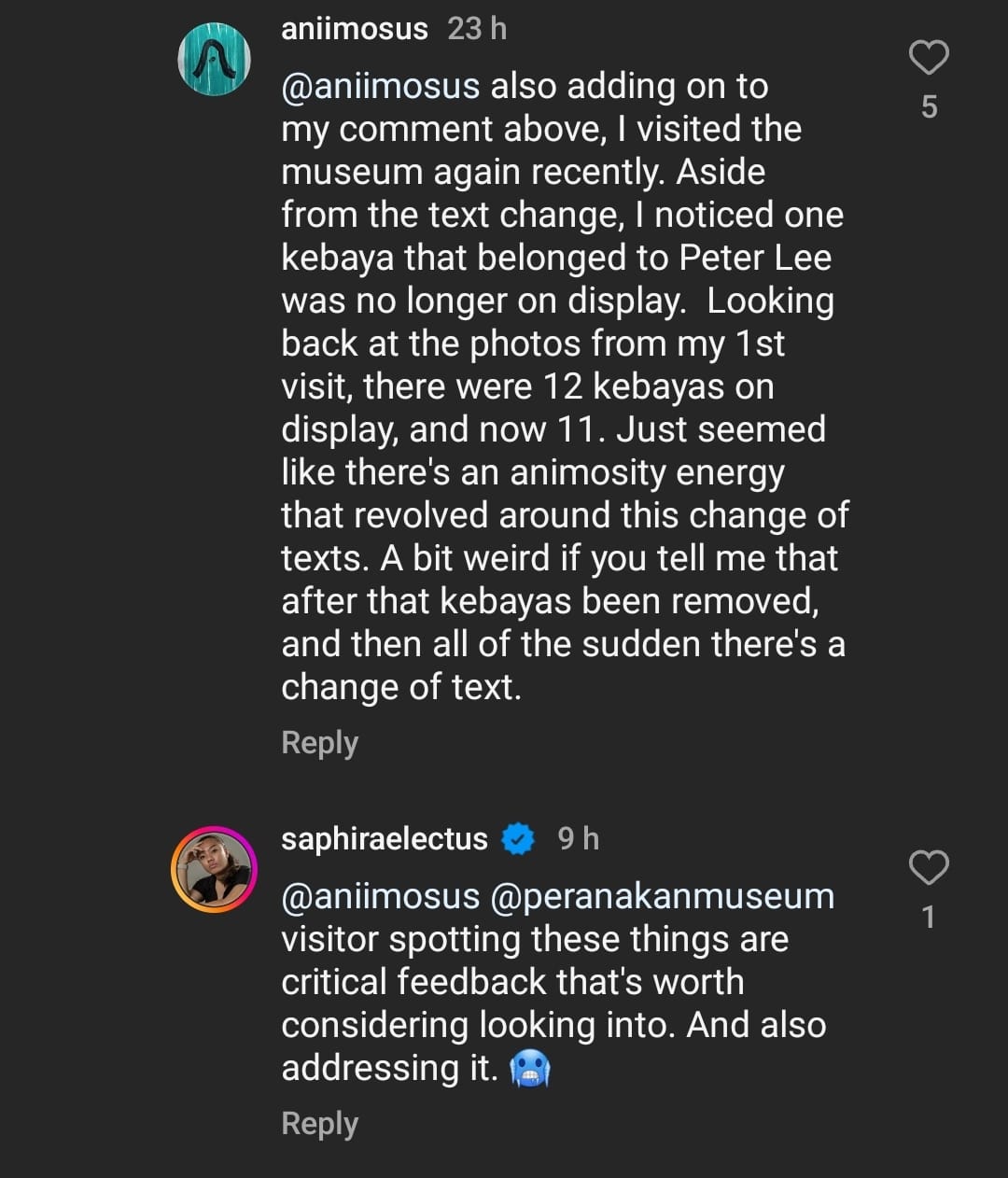
Annimosus was of the view that “the truth” was removed from the exhibition’s text, and cited the museum’s lack of notice about the change a “denial in justifying”. Furthermore, Annimosus noted that when they visited the exhibit, there were 11 kebayas, not 12, adding that there seemed to be an energy of “animosity” in the change.
Well, who is Peter Lee?
Wake Up Singapore understands that the “Peter Lee” referred to in the comments is the same Peter Lee profiled by Mothership in 2017. In that piece, Peter, who was described as a “serial hoarder-turned-culture historian” argued that the Kebaya was not Peranakan.
“It was really… it sort of destroyed all the illusions; it wasn’t Peranakan. The sarong kebaya is not Peranakan. It turns out it was a fashion that was worn by everybody in many parts of island Southeast Asia – Indonesia, Malaysia, Thailand. Everybody contributed to this style.
Over time it was sort of abandoned, and became perceived as being Malay, but actually it was worn by people of all communities, and everybody contributed some aspect to it… so it was sort of early globalised modern fashion, and it’s not really Peranakan at all…
In a 2021 Straits Times report, Peter Lee was honoured as one of 63 heritage patrons whose combined donations to National Heritage Board (NHB) added up to SGD 3.24 million.
He previously served served as guest curator on at least two occasions for the Peranakan Museum. One of these exhibitions, titled ‘Peranakan Fashion and Its International Sources: Sarong Kebaya’, featured pieces that were donated by his parents.

In Peter’s view, neither the Peranakans nor any other race or nationality can “claim” the Kebaya.
He elaborates in another article by Art of The Ancestors:
The kebaya, rather than being a pure symbol of race or nationality, has such a hybrid and convoluted transnational history…
What is NHB’s position?
At present, with the seemingly conflicting messaging and the amendments which may have gone unnoticed but for Haider’s observation, it is unclear what the NHB’s position is.
In a press release dated 23 November 2023 on the nomination of the kebaya onto the UNESCO intangible cultural heritage of humanity list, Ms Chang Hwee Nee, the Chief Executive Officer of NHB, said
“Kebaya has been, and continues to be, a central aspect in the representation and display of cultural heritage and identity for Malay, Peranakan and other communities in Singapore, and is an integral part of our heritage as a multicultural port city, with links across Southeast Asia and the world.
The multinational nomination underscores this multiculturalism and our common roots with the region, and acknowledges the knowledge, artisanal skills and socio-cultural values associated with kebaya. We hope that the nomination will also generate greater interest and pride in the making and wearing of kebaya across different communities and generations in Singapore.”
It would serve NHB well to clarify its position on Kebayas and explain why the write-up at the Her Kebaya exhibition was amended.
Wake Up Singapore has reached out to The Peranakan Museum for comment.
Since you have made it to the end of the article, follow Wake Up Singapore on Telegram!
Wake Up Singapore is a volunteer-run site that covers socio-political news in Singapore. If you would like to support Wake Up Singapore’s work, please do consider buying a mug or two!
